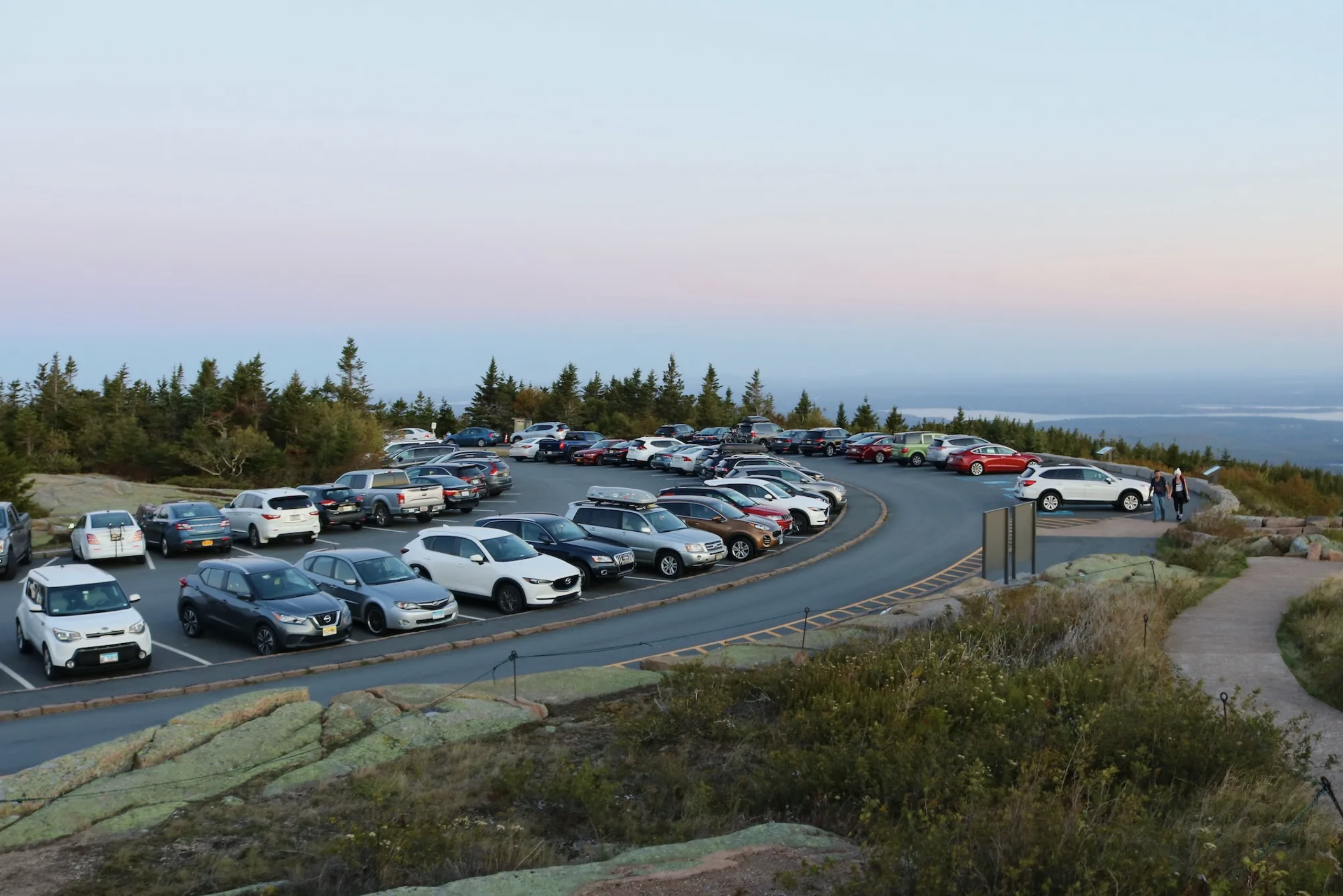H1: Our Guide to Visiting Bar Harbor on a Budget
Bar Harbor is renowned for its stunning coastal beauty, rich history, and the majestic Acadia National Park. And one of our favorite things about it is that a getaway to Mount Desert Island can be a treasure trove of experiences for any traveler’s budget. Whether you’re a family looking to make lasting memories without stretching your wallet, a couple seeking a romantic retreat, or a solo traveler ready to explore, our picturesque island offers a wealth of activities that won’t break the bank.
In this blog, we’ll journey through Bar Harbor, discovering how to savor the charm and adventure of our idyllic town, all while keeping your budget happily intact. You’ll find 8 free things to do in Bar Harbor and the surrounding area, plus our best advice on budget friendly accommodations and more.
And to kick things off, here’s one tip that every visitor to Bar Harbor on a budget should know: take the free Island Explorer Shuttle wherever you go! The Bar Harbor free shuttle has 11 routes around the island and will stop anywhere along the routes for passengers if it’s safe to do so. It’s a great way to get to all MDI’s greatest hits and eliminates the need to find (and pay for) parking in Bar Harbor. Just note, if you use the Island Explorer to visit Acadia National Park, be sure to have a park entrance pass.
Walk the Shore Path
Being more than a century old, the Bar Harbor Shore Path is close to our town’s heart. This 1.5 mile walking path leads from the Ells Pier in downtown to Wayman Lane along the east shore, following the edge of Frenchman Bay for views of the water, surrounding islands and the town’s oldest inn and several historic summer cottages. Its level surface makes it accessible for strollers, wheelchairs and those with limited mobility. You’ll find visitors and full-time residents alike ambling along or going for a jog from early morning to late in the evening.

In fact, the Shore Path is so treasured by Bar Harbor residents that when it was severely damaged in the unprecedented coastal storms of January 2024, the town rallied funds to repair and improve it. The restoration includes the construction of new seawalls to protect the path and the addition of gorgeous new landscaping around it.
“I think a new hidden gem will be the Shore Path,” said Jeremy Dougherty of the Bar Harbor Inn. “Especially with all the amazing gardens that we’re putting in… it will have hardscaping and then these beautiful flowers and plantings around it. I mean, I think people will show up thinking it will look like it did for the last 20 or 50 years but it’s going to be very different. In a very, very good way.”
You can find updates on the project at the Bar Harbor Inn and contribute to its restoration and preservation at the VIA’s gofundme.
Walk Across the Ocean to Bar Island
Exploring Bar Island has to be one of the most underrated things to do in Bar Harbor—and it doesn’t cost a dime! The Island sits just half a mile off the mainland and each day for about 3 hours at low tide, it is accessible via the gravel Bar Island Land Bridge. The natural bar allows you to walk to the island from the end of Bridge St where you can then explore the 1.5 mile Bar Island Trail.
“I always say how amazing it is that the ocean lowers down to this convenient island. So many other attractions you have to drive to,” Jeremy said. “If you didn’t know about this, it’s gonna change your life! You have all these coves, various beaches and different little trails.”
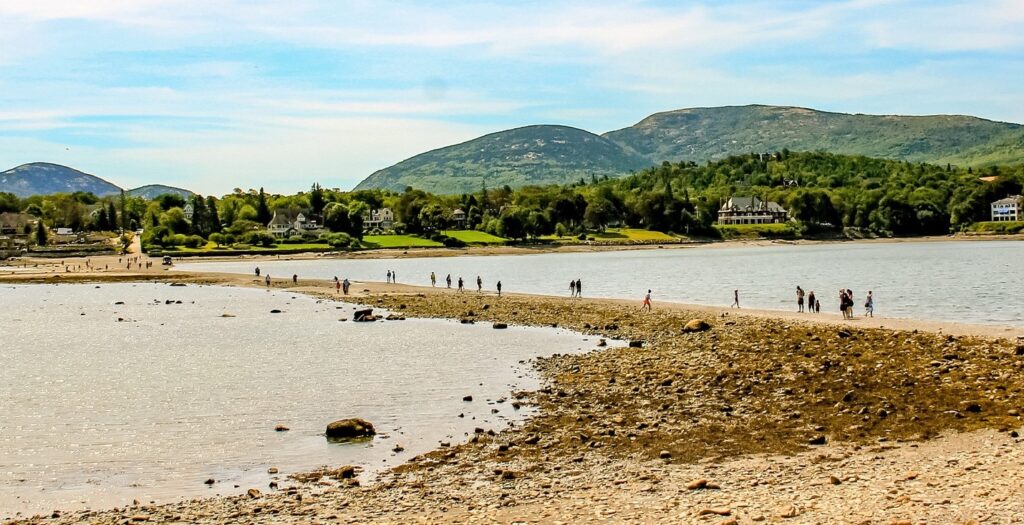
Bar Island offers a great opportunity for tide pooling and an easy hike to its highest point provides views of Bar Harbor and Frenchman Bay. Just try not to lose track of time or you might be waiting 9 hours for the next low tide! Or, if you’re like local mom, Christina, you could plan with a picnic and books to get “stuck” for a lovely summer afternoon.
Explore Local Art
Our town is home to some talented artists and craftsmen! You can visit up to five different art galleries and open studios across the island that cost nothing to enter. You’ll find a mix of oil paintings, photography, sculptural works, hand made furniture and much more—often drawing inspiration for the beautiful landscape and rich history of the area. And if you’re tempted to buy something, well, we’d love the support for our local artisans!
]Listen to the Town Band on the Village Green
When evening rolls around, there’s music to be had in downtown Bar Harbor! Every Monday and Thursday of the summer, the Bar Harbor Town Band puts on an hour-long, free concert on the Village Green. People bring chairs, blankets, drinks, and snacks to lounge on the grass and enjoy the show. You may even catch visiting musicians jumping in to join the regular cast on a special night! If the forecast says rain, the show goes on—the band and audience move to the Bar Harbor Congregational Church to stay dry.
Photo-Op at Bass Harbor Lighthouse
Ready to see some classic Maine sights? One of about 80 lighthouses in Maine, the Bass Harbor Head Light Station guards the southern entrance of Blue Hill Bay and warns boats against Bass Harbor Bar. Built in 1858, its tower and lightning road stand at 37 feet tall and its light has a 13 mile range. Because of its western location, it is a popular spot around sunset, when Frenchman bay is painted in pink and orange, but we think it makes for an equally stunning and iconic photo in morning or midday.
Wander Asticou Azalea Garden
Visiting Maine, you may not expect to find Japanese inspired landscaping, but at Asticou Azalea Garden you’ll be transported. This lovely preserve in MDI’s Northeast Harbor is free to visit and beautifully combines Japanese design with native Maine plantings and natural features. Every season is different at Asticou with a flowering cherry tree, colorful azaleas and rhododendrons, Japanese iris, smoke bush, water lilies and more. Wander its trails at your leisure, keeping an eye out for frogs, songbirds and the occasional volunteer, carefully raking the sand garden.
To take in even more natural beauty, visit the preserve’s sister, Thuya Garden or the meadows and trails around Little Long Pond. The Preserve often holds guided walks, demonstrations and discussions that offer a great way to learn more about our natural landscape. Please note that most require a small donation and registration in advance to ensure there’s space.

Sign Up for Schoodic Institute Events
Continue your learning and perhaps even contribute to Mount Desert Island’s scientific research by signing up for a free event through the Schoodic Institute. Located on Schoodic Point, an area steeped in the history of the Wabanaki people, the Schoodic Institute occupies the former Navy Base from which it conducts research on Acadia’s ecology, climate change adaptation, and biodiversity.
Each summer their events calendar is full of opportunities to get involved with this work. Learn about the forces that shaped Maine’s coast on a Geology Walk, practice your nature journaling, or become a citizen scientist by assisting with data collection on one of Schoodic Institute’s many field trips around the island and surrounding area. Some of these events require advance registration and for those that make excursions into Acadia National Park, a day pass will be required for entry.
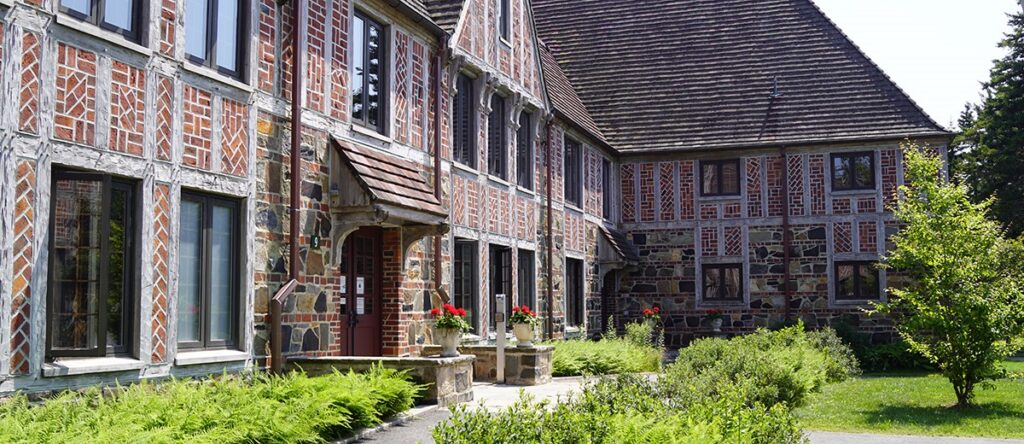
Visit the Dorr Museum
Part of the College of the Atlantic, the Dorr Museum of Natural History is housed in the original headquarters of Acadia National Park. Its exhibits are designed and produced by students of the college, so you’re bound to discover new ways to learn about Maine’s wildlife with each visit. It features dioramas of our coastal creatures, a tide pool tank, and of course the gift shop full of goodies inspired by the natural sciences.
The Dorr is free to enter and is open year-round with seasonal changes to their hours, which you can find on their website. Plus, the Bar Harbor free shuttle stops at the museum so you can catch a ride there.
Tips on Lodging for Bar Harbor on a Budget
When it seems like every block in Bar Harbor has an option for hotel, inn, B&B or short-term rental it can be tough to uncover out the best deals. Here are our best recommendations for budget accommodations in Bar Harbor:
- Bar Harbor Villager Motel: Located in the heart of downtown Bar Harbor, this charming motel has all the convenience at one of the best prices. Free off-street parking, complimentary grab & go breakfast, a pool, and pristine rooms make this property a fabulous deal. And catch the Island Explorer right around the corner at the Village Green.
- Bar Harbor Motel: Talk about hidden gems! Perfect for families, young couples and solo travelers who are keen on maximizing their time in Acadia, this newly renovated motel has direct trail access to the park. Its retro decorated rooms are totally unique and a stay there feels much like renting a private cabin.
- Acadia Inn: More traditional hotel accommodations, this property hones the home-away-from-home feeling. Their backyard is teeming with things to do for kids and adults alike such as movie nights, a playground, s’mores roasting parties and more.
- Acadia National Park Campgrounds: For those equipped with a tent, RV or trailer, Acadia’s four campgrounds are some of the cheapest accommodations in the area. Sites are just $30-60 a night, depending on the size and equipment you bring and offer flush toilets, running water, fire pits and picnic benches.

 The
The 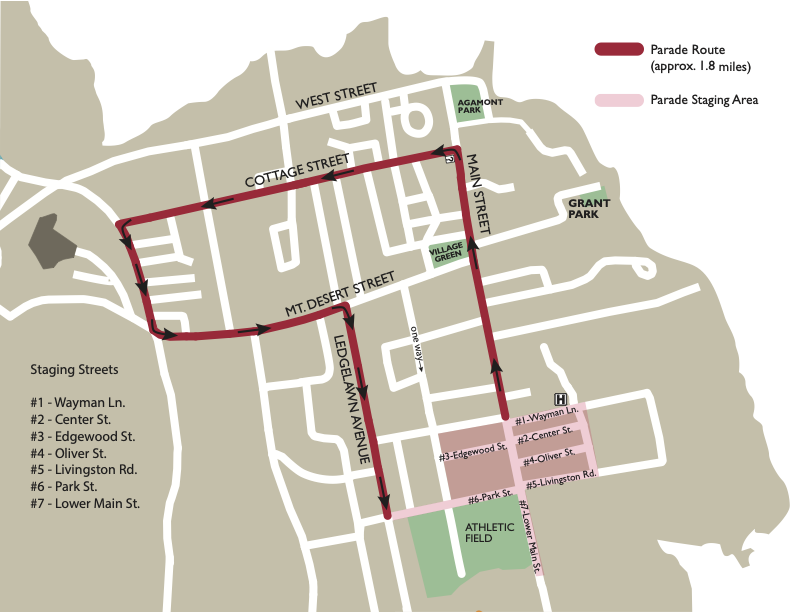 Pro Tip: While parking downtown is free on the 4th of July, spots can be limited and some roads are closed to traffic. We suggest leaving your car parked at your hotel and catching the free
Pro Tip: While parking downtown is free on the 4th of July, spots can be limited and some roads are closed to traffic. We suggest leaving your car parked at your hotel and catching the free  8am-3pm
8am-3pm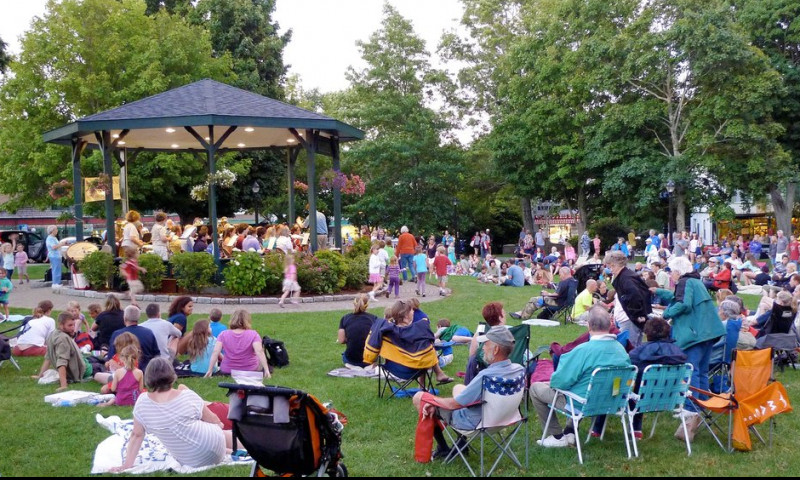 If classical is more your style, don’t miss the
If classical is more your style, don’t miss the  Pro Tip: Those staying at the
Pro Tip: Those staying at the 
 The first time I ever took a Bar Harbor vacation, I walked 9 miles on day one! Of course, you can drive to many of Acadia’s best attractions, but chances are you’ll want to get out at some point to wander around, so comfortable shoes are important. A good pair of sneakers will do the job just fine, but hiking boots are also a great option if you plan to tackle steeper trails like the Precipice Trail or Cadillac South Ridge.
The first time I ever took a Bar Harbor vacation, I walked 9 miles on day one! Of course, you can drive to many of Acadia’s best attractions, but chances are you’ll want to get out at some point to wander around, so comfortable shoes are important. A good pair of sneakers will do the job just fine, but hiking boots are also a great option if you plan to tackle steeper trails like the Precipice Trail or Cadillac South Ridge.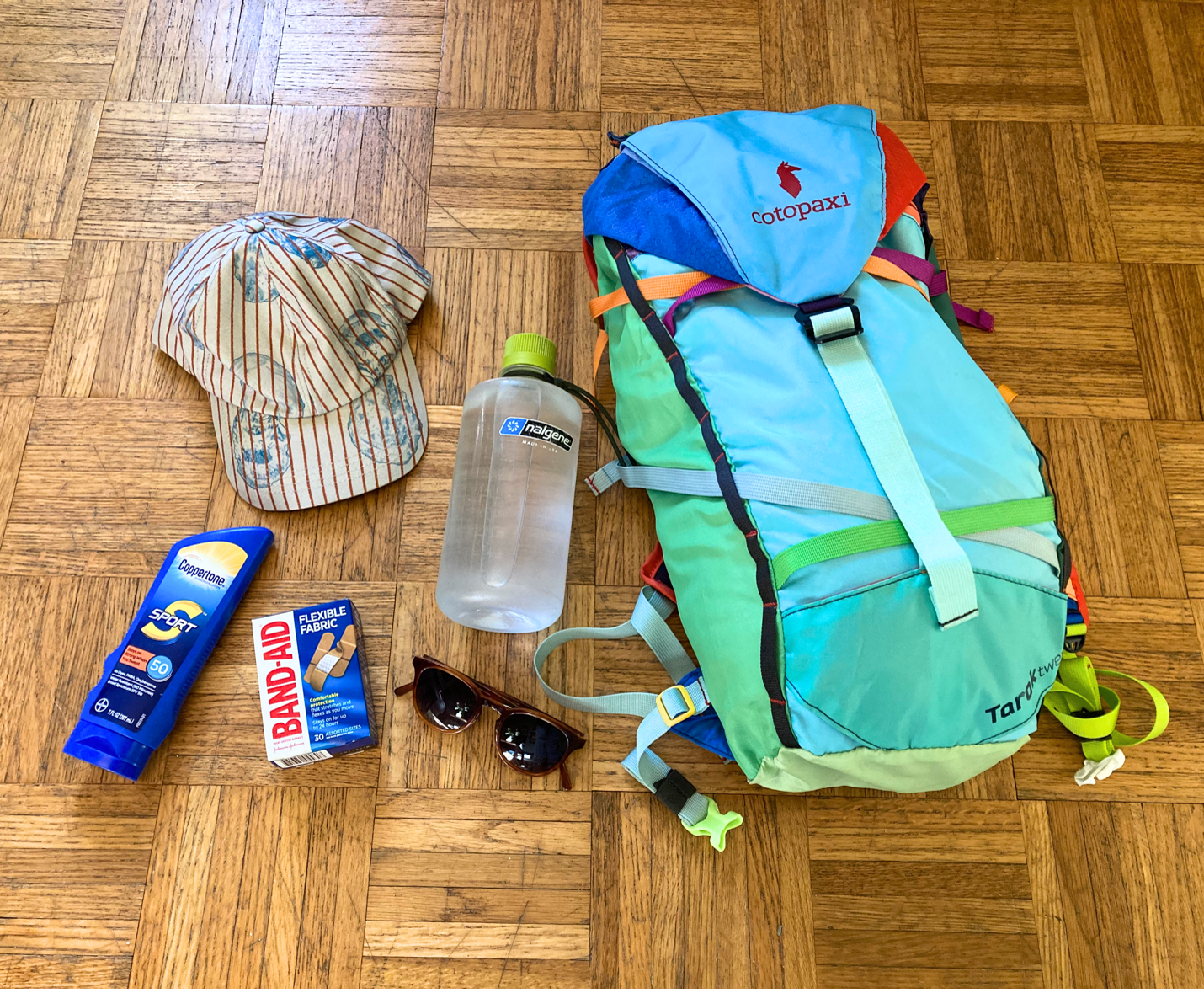 While hanging out in your room at the Acadia Inn can be relaxing, we encourage you to go out, go out, go out! There’s so much to see and enjoy in nature on Mount Desert Island; it’s what will make you fall in love with our coastal haven. That said, you should be prepared with a few items when spending so much time outdoors:
While hanging out in your room at the Acadia Inn can be relaxing, we encourage you to go out, go out, go out! There’s so much to see and enjoy in nature on Mount Desert Island; it’s what will make you fall in love with our coastal haven. That said, you should be prepared with a few items when spending so much time outdoors: For example, I love having a disposable camera or Instax on hand to snap photos while out and about. Perhaps it’s old school, but the physical photos just have a certain something that smartphone pics can never achieve.
For example, I love having a disposable camera or Instax on hand to snap photos while out and about. Perhaps it’s old school, but the physical photos just have a certain something that smartphone pics can never achieve. The Mount Desert Oceanarium and Education Center is a favorite for all ages, creating a window into the lives of the uncountable and incredible creatures that inhabit our shores and waters, plus the people who have built communities around them. They have 9 different tanks featuring different snapshots of Maine ocean habitat, an authentic lobster boat you can explore indoors, and a touch pool brimming with sea stars, crabs, fin fish and more. You can even get a peek at rare cotton candy, blue, and orange lobsters—not for eating!
The Mount Desert Oceanarium and Education Center is a favorite for all ages, creating a window into the lives of the uncountable and incredible creatures that inhabit our shores and waters, plus the people who have built communities around them. They have 9 different tanks featuring different snapshots of Maine ocean habitat, an authentic lobster boat you can explore indoors, and a touch pool brimming with sea stars, crabs, fin fish and more. You can even get a peek at rare cotton candy, blue, and orange lobsters—not for eating! Continue your journey of learning with a trip to the Abbe Museum, Maine’s one and only Smithsonian affiliate right in downtown. This ever-evolving museum showcases the history and cultures of Maine’s Native people, the Wabanaki through rotating exhibitions, special events and workshops. With thousands of artifacts that tell the story of the Passamaquoddy, Penobscot, Micmac, and Maliseet tribes who have made Maine home for over 12,000 years, the Abbe Museum is worth a visit no matter the weather.
Continue your journey of learning with a trip to the Abbe Museum, Maine’s one and only Smithsonian affiliate right in downtown. This ever-evolving museum showcases the history and cultures of Maine’s Native people, the Wabanaki through rotating exhibitions, special events and workshops. With thousands of artifacts that tell the story of the Passamaquoddy, Penobscot, Micmac, and Maliseet tribes who have made Maine home for over 12,000 years, the Abbe Museum is worth a visit no matter the weather.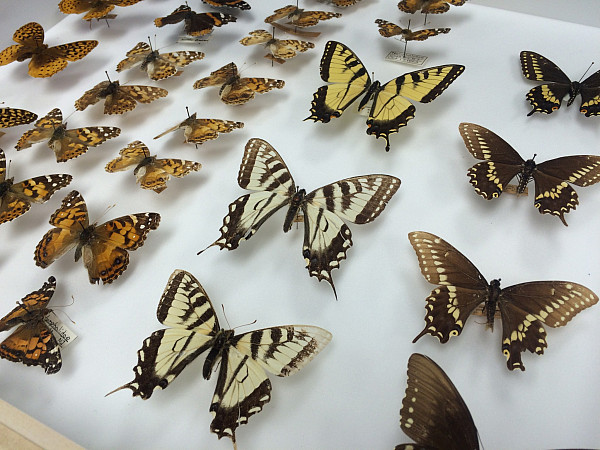 Part of the College of the Atlantic, the Dorr Museum of Natural History is housed in the original headquarters of Acadia National Park. Its exhibits are designed and produced by students of the college, so you’re bound to discover new ways to learn about Maine’s wildlife with each visit. It features dioramas of our coastal creatures, a tide pool tank, and of course the gift shop full of goodies inspired by the natural sciences.
Part of the College of the Atlantic, the Dorr Museum of Natural History is housed in the original headquarters of Acadia National Park. Its exhibits are designed and produced by students of the college, so you’re bound to discover new ways to learn about Maine’s wildlife with each visit. It features dioramas of our coastal creatures, a tide pool tank, and of course the gift shop full of goodies inspired by the natural sciences.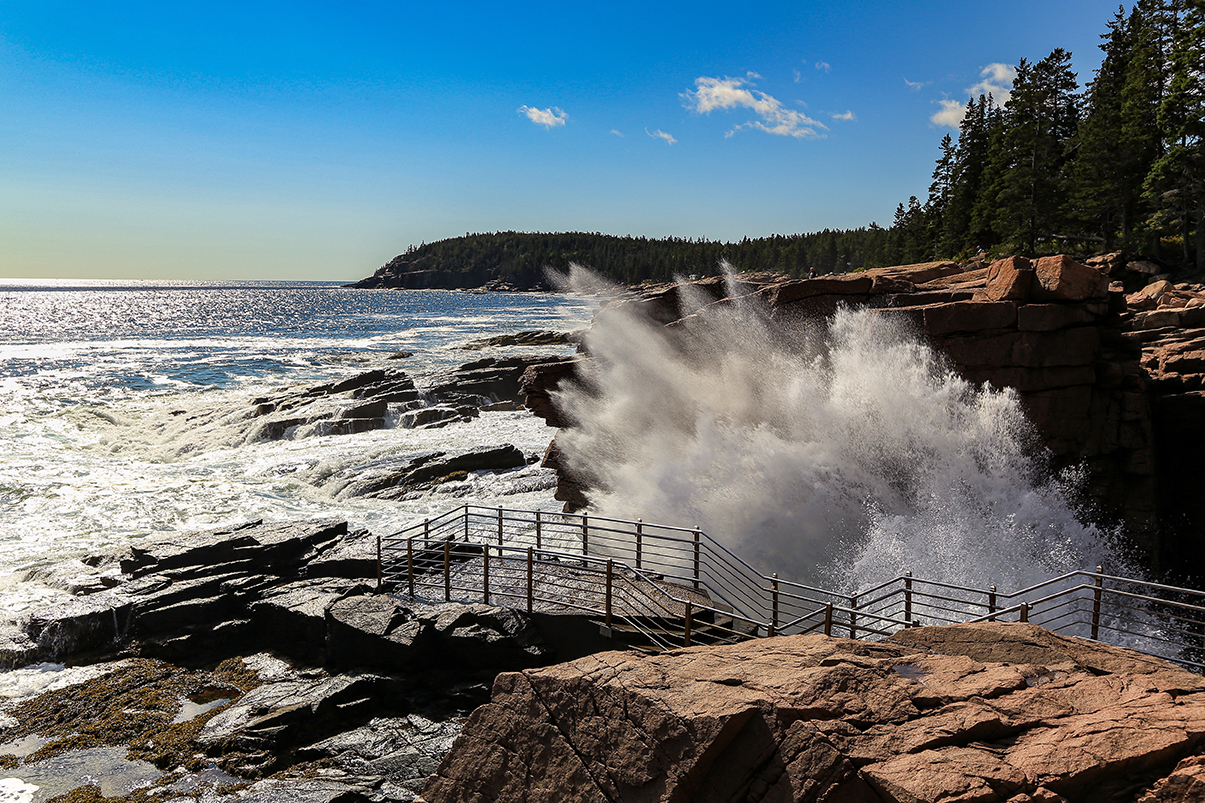 After you descend Cadillac, continue along the Park Loop Road to reach Thunder Hole. There is a convenient parking lot or nearby street parking, so you don’t have to go far from your car to see this popular destination. Carved by years of tides, this narrow channel is named for the thunderous reverberation created by waves rushing into it. Storms can increase the wave size and strength so visitors should be cautious of their potential to wash over surrounding ledges, outcrops, and walkways. While best viewed 1-2 hours before high tide, visiting Thunder Hole in the rain is a testament to the ocean’s majesty at any time of day. Careful not to get mesmerized by the bursting waters or you might soon find the rain has soaked you through.
After you descend Cadillac, continue along the Park Loop Road to reach Thunder Hole. There is a convenient parking lot or nearby street parking, so you don’t have to go far from your car to see this popular destination. Carved by years of tides, this narrow channel is named for the thunderous reverberation created by waves rushing into it. Storms can increase the wave size and strength so visitors should be cautious of their potential to wash over surrounding ledges, outcrops, and walkways. While best viewed 1-2 hours before high tide, visiting Thunder Hole in the rain is a testament to the ocean’s majesty at any time of day. Careful not to get mesmerized by the bursting waters or you might soon find the rain has soaked you through.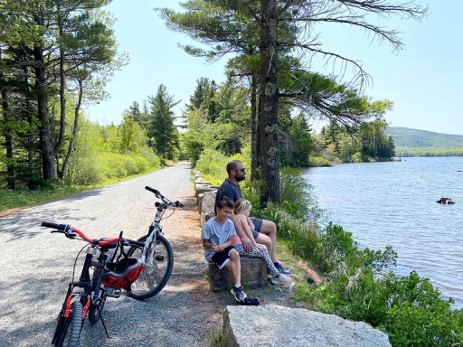
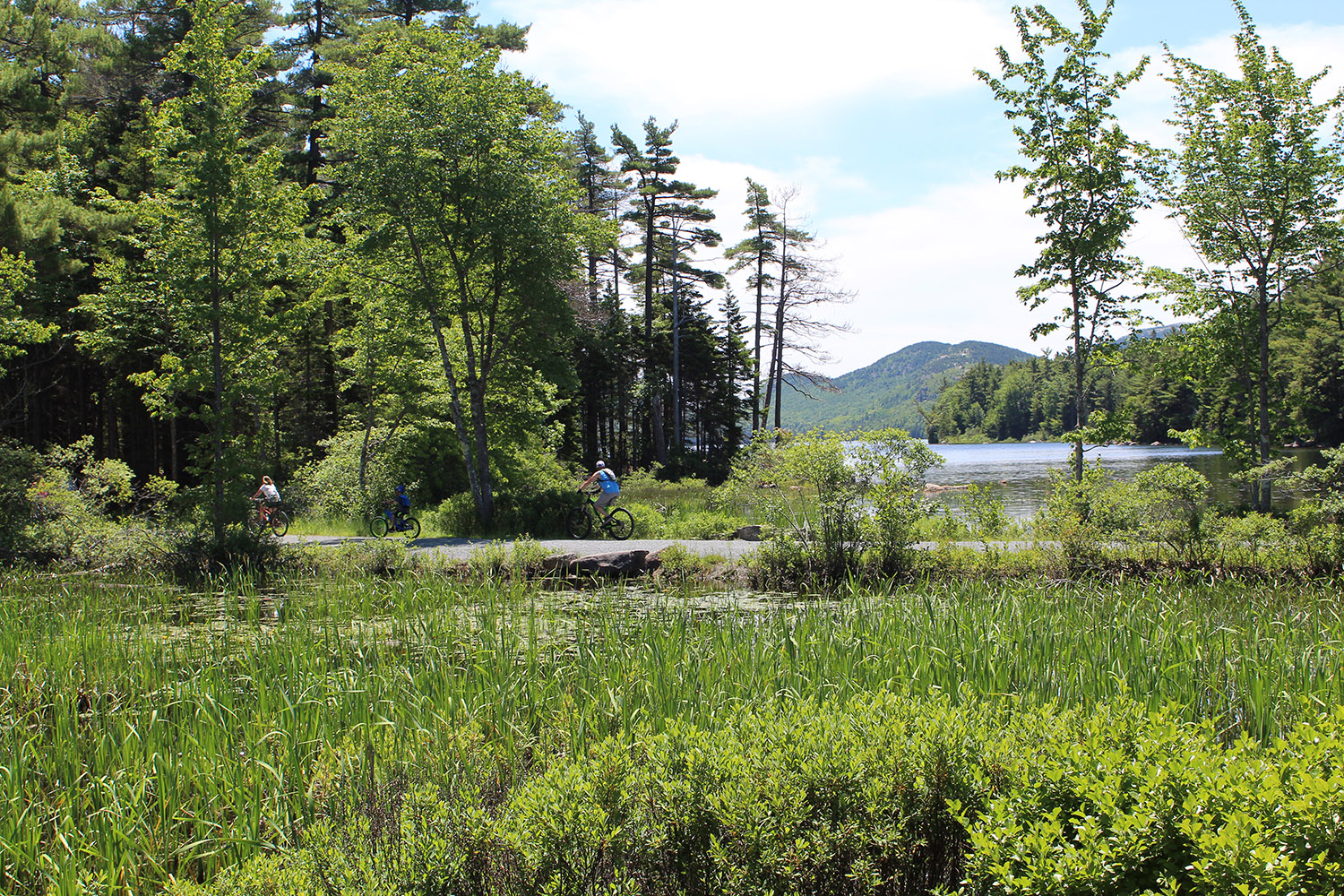
 Of course, Acadia is known for its 45 miles of carriage roads, commissioned by John D. Rockefeller, and built between 1913 and 1940. These motor free gravel roads follow the contours of the land, emphasize scenic views, and are shared by pedestrians, cyclists, and horse-drawn carriages to this day. They are perfect for bikers of all skill levels and allow you to check off some of the best sights in the park atop two wheels. Most Acadia carriage roads do have some variable elevation, but you can always hop off and walk while enjoying the views.
Of course, Acadia is known for its 45 miles of carriage roads, commissioned by John D. Rockefeller, and built between 1913 and 1940. These motor free gravel roads follow the contours of the land, emphasize scenic views, and are shared by pedestrians, cyclists, and horse-drawn carriages to this day. They are perfect for bikers of all skill levels and allow you to check off some of the best sights in the park atop two wheels. Most Acadia carriage roads do have some variable elevation, but you can always hop off and walk while enjoying the views. For a good workout and fewer cars to share the road with, sport cyclists can head to Southwest Harbor where you’ll find well-paved surfaces and views of the Cranberry Islands, Bass Harbor Head Light, and more. Depending on your starting point, these routes can be anywhere from 16 to 86 miles long.
For a good workout and fewer cars to share the road with, sport cyclists can head to Southwest Harbor where you’ll find well-paved surfaces and views of the Cranberry Islands, Bass Harbor Head Light, and more. Depending on your starting point, these routes can be anywhere from 16 to 86 miles long.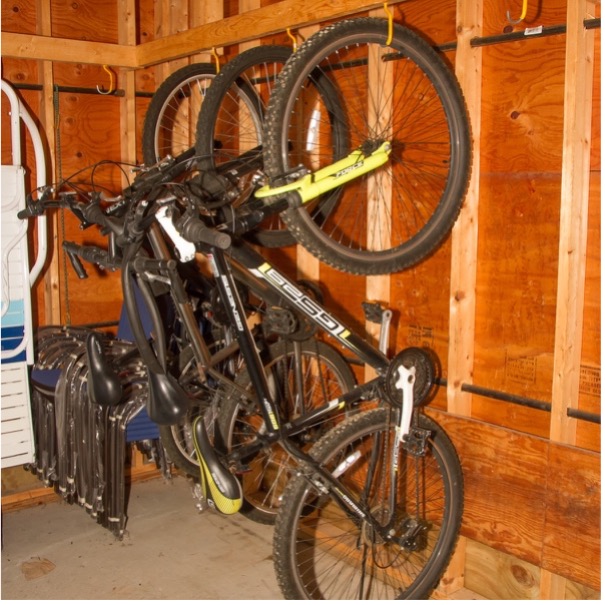 It’s nearly impossible to see all Acadia has to offer in one day and there are many amazing hikes and activities that can’t be done on a bike. The Bar Harbor Motel offers fully enclosed and locked
It’s nearly impossible to see all Acadia has to offer in one day and there are many amazing hikes and activities that can’t be done on a bike. The Bar Harbor Motel offers fully enclosed and locked 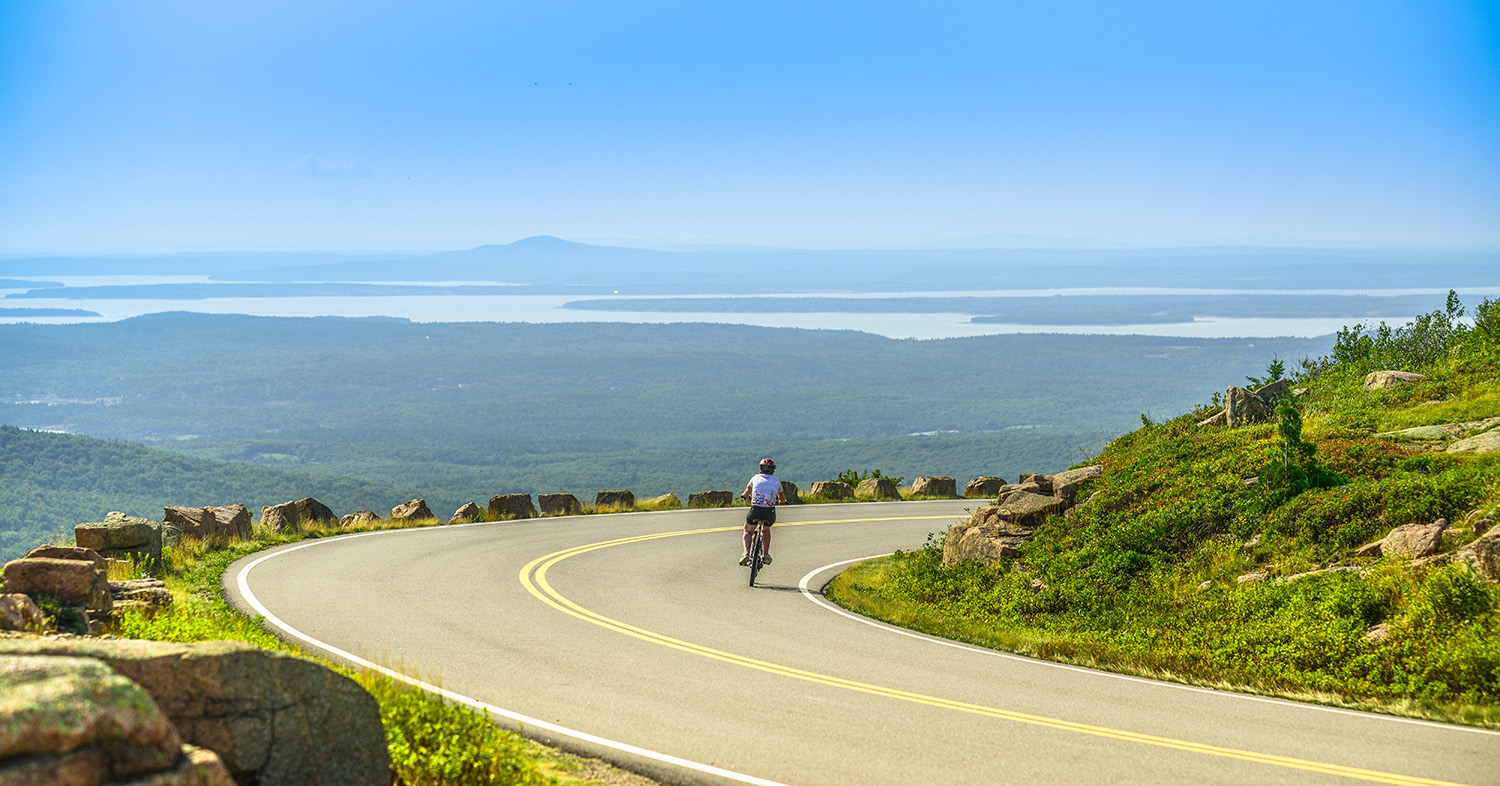
 If you’re planning a trip to Acadia, you’ve probably considered catching a sunrise at Cadillac Mountain, and for good reason! Not only is Cadillac the highest peak in the park, it’s also the highest point on the eastern seaboard and provides visitors with magnificent, sweeping views of the Atlantic Ocean, glacial coastline, and island landscape.
If you’re planning a trip to Acadia, you’ve probably considered catching a sunrise at Cadillac Mountain, and for good reason! Not only is Cadillac the highest peak in the park, it’s also the highest point on the eastern seaboard and provides visitors with magnificent, sweeping views of the Atlantic Ocean, glacial coastline, and island landscape.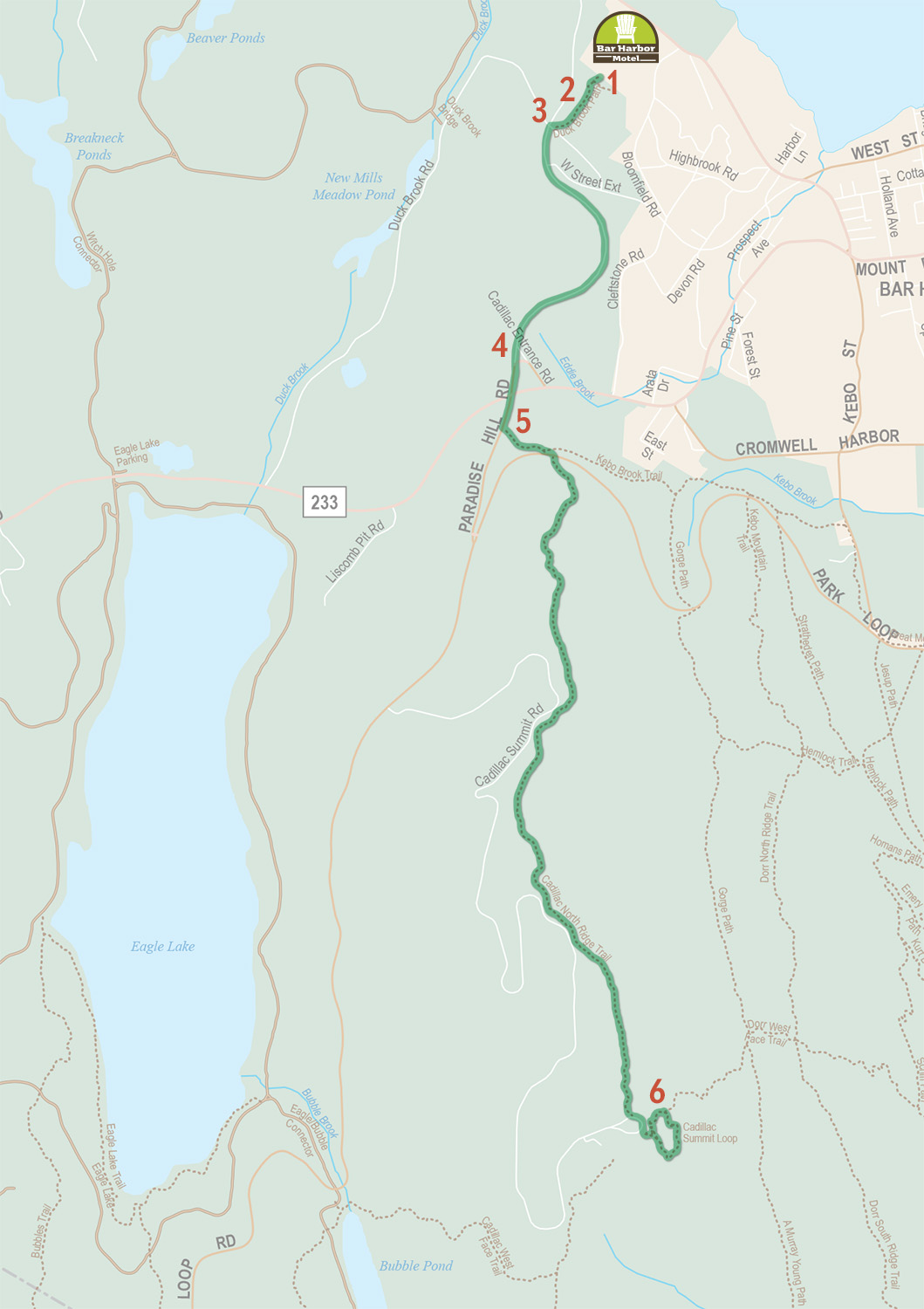 While every trail is wonderful in its own right, our plan for an Acadia sunrise hike takes the convenient
While every trail is wonderful in its own right, our plan for an Acadia sunrise hike takes the convenient 
